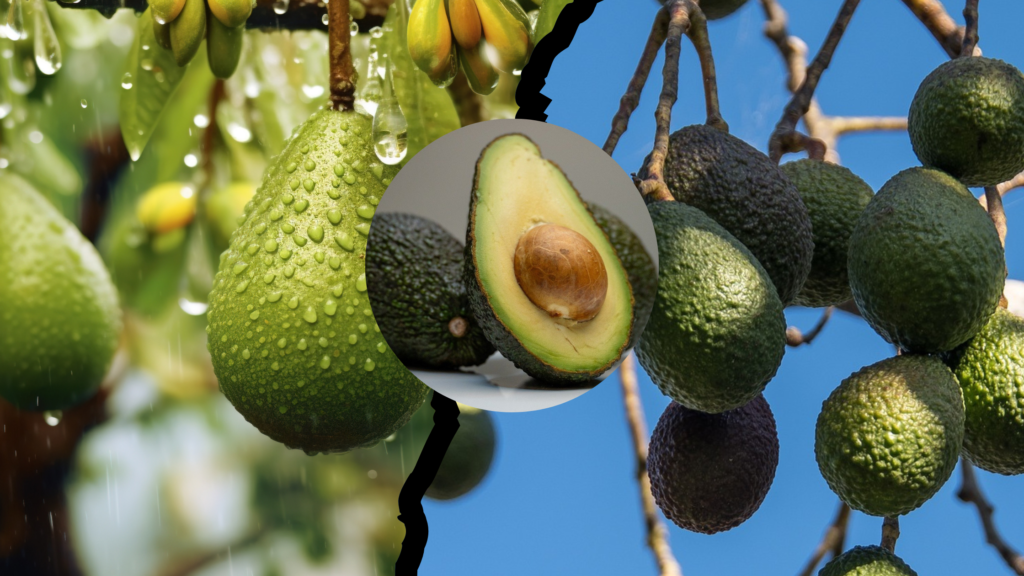Successfully Grow Avocados in India
Introduction
Avocado is a green fruit with a creamy texture and mild taste. It comes from Central and South America and is rich in healthy fats, vitamins, and minerals. Many people love adding avocados to salads, sandwiches, and smoothies because they are tasty and good for your health. They are becoming popular all over the world for their nutrition and versatility.
Avocados are becoming very popular in India, especially in urban areas. People are discovering their health benefits, like being good for heart health and packed with nutrients. As more people focus on healthy eating, the demand for avocados is rising. This trend is making them a common sight in markets and restaurants, as many want to enjoy this tasty fruit.
Avocados are relatively new to India, but certain regions have the perfect climate for growing them. Areas with mild temperatures, well-drained soil, and plenty of sunlight, like parts of Karnataka, Maharashtra, and Uttarakhand, are ideal for avocado cultivation. As more farmers recognize their potential and the growing demand, we’re starting to see more avocados being grown and enjoyed in the country.
This blog post will explore, How to Successfully Grow Avocados in India? their nutritional benefits, health benefits, and Step-by-Step Guide to Growing Avocados.
Ideal Growing Conditions in India
Not all regions in India are suitable for avocado cultivation, but a few areas have the perfect climate. Here are some key factors for successful grow avocado in India:
Climate:
- Avocados thrive in sub-tropical climate, ideally between 15°C to 35°C. They require a frost-free environment to grow well.
Soil:
- Well-drained, sandy loam soil with good organic content is ideal. Avocados do not like waterlogged conditions.
Sunlight:
- Full Sun: Avocados require full sunlight for at least 6 to 8 hours a day for optimal growth and fruiting.
Choosing the Right Avocado Variety
Choosing the right avocado variety is essential for successful cultivation and achieving the best flavor and yield. Here are some popular varieties suited for different climates and uses:
1. Hass

- Description: Dark green to black skin when ripe, with a creamy texture and rich flavor.
- Climate: Thrives in temperate climates; widely grown globally. Mainly grow in India in North East India and South India
- Benefits: High oil content and great taste make it a favorite for consumers.
2. Fuerte

- Description: Smooth, green skin that remains green when ripe; has a mild flavor.
- Climate: Tolerates cooler temperatures better than Hass.
- Benefits: Excellent for salads and as a table fruit; resistant to some diseases.
3. Bacon
- Description: Light green skin; milder flavor and lower oil content.
- Climate: Grows well in cooler climates.
- Benefits: Ideal for fresh eating; good alternative in less ideal avocado-growing regions.
4. Pinkerton

- Description: Long, oval shape with a pebbly skin; rich flavor and creamy texture.
- Climate: Performs well in warm climates. ( 15°C to 45°C )
- Benefits: High yield and good disease resistance; great for guacamole.
5. Zutano

- Description: Green, shiny skin; mild flavor.
- Climate: Good for cooler areas and has a higher frost tolerance.
- Benefits: Early harvesting and suitable for intercropping with other varieties.
Step-by-Step Guide to Growing Avocados
Successfully Grow Avocados in India can be a rewarding venture. Here’s a step-by-step guide to help you cultivate this nutritious fruit:
Step 1: Choose the Right Variety
- Research Varieties: Select a variety suited to your climate, such as Hass, Fuerte, or Bacon.
- Source Quality Seeds or Saplings: Purchase healthy seeds or grafted saplings from reputable nurseries.
Step 2: Prepare the Soil
- Soil Type: Avocados prefer well-drained, sandy loam or clay loam with good organic content.
- Soil Testing: Test the soil for pH (ideal is 6-6.5) and nutrients.
- Amend the Soil: Add organic matter like compost or well-rotted manure to enhance fertility and drainage.
Step 3: Select the Planting Site
- Sunlight: Choose a location that receives full sun for at least 6-8 hours a day.
- Shelter from Wind: Ensure the site is protected from strong winds to prevent damage to young trees.
Step 4: Planting
- Spacing: Plant saplings about 6-8 meters apart to allow for growth.
- Planting Depth: Dig a hole twice the size of the root ball and place the sapling in, ensuring the graft union is above the soil level.
- Watering: Water thoroughly after planting to settle the soil.
Step 5: Watering and Care
- Irrigation: Water regularly, especially during dry spells. Keep the soil moist but not waterlogged.
- Mulching: Apply mulch around the base to retain moisture and suppress weeds.
- Fertilization: Use a balanced fertilizer (like NPK) every few months during the growing season.
Step 6: Pruning
- Shape the Tree: Prune to maintain a good shape and remove dead or crossing branches.
- Timing: Best done in the late winter or early spring before new growth begins.
Step 7: Pest and Disease Management
- Monitor for Pests: Keep an eye out for common pests like aphids and caterpillars.
- Organic Solutions: Use neem oil or insecticidal soap for pest control.
- Disease Prevention: Ensure good air circulation and avoid overwatering to prevent root rot.
Step 8: Harvesting
- Timing: Avocados typically take 6-18 months to mature, depending on the variety.
- Indicators: Check for size and color change; avocados do not ripen on the tree.
- Method: Harvest carefully to avoid damaging the fruit or tree.
Step 9: Post-Harvest Care
- Ripening: Allow harvested fruit to ripen at room temperature.
- Storage: Store ripe avocados in the refrigerator to prolong freshness.
Potential Market and Economic Benefits of Avocado Cultivation in India
1. Growing Demand
- Health Trends: With an increasing focus on healthy eating, avocados are gaining popularity as a superfood rich in healthy fats, vitamins, and minerals.
- Urban Consumption: Urban populations are driving demand as they seek nutritious, trendy foods, leading to a rise in avocado-based dishes in restaurants and cafes.
2. Export Opportunities
- International Market: As global demand for avocados continues to grow, India has the potential to export high-quality avocados to countries like the UAE, Europe, and the USA.
- Diversification: Farmers can diversify their income sources by tapping into export markets, enhancing their economic stability.
3. High Profit Margins
- Market Price: Avocados often command high prices in both domestic and international markets, leading to better profit margins for farmers compared to traditional crops.
- Yield Potential: With proper care, avocado trees can produce fruit for several decades, offering a long-term income stream.
Challenges of Avocado Cultivation in India
- Climate Sensitivity
- Challenge: Avocados are sensitive to frost and extreme heat, making them vulnerable in certain regions.
- Tip: Choose climate-resilient varieties and plant in microclimates where temperatures are more stable.
- Soil Requirements
- Challenge: They require well-drained soil; waterlogging can lead to root rot.
- Tip: Conduct soil tests before planting and amend the soil with organic matter to improve drainage.
- Pest and Disease Management
- Challenge: Avocados are susceptible to pests like aphids and diseases such as root rot.
- Tip: Implement integrated pest management (IPM) practices, using organic pesticides and encouraging beneficial insects.
- Lack of Knowledge
- Challenge: Many farmers may lack knowledge about avocado cultivation techniques.
- Tip: Attend workshops, seek guidance from agricultural experts, and connect with successful avocado farmers for best practices.
- Market Fluctuations
- Challenge: Prices can fluctuate based on supply and demand, affecting profitability.
- Tip: Stay informed about market trends and consider diversifying crops to mitigate risks.
- Water Management
- Challenge: Inconsistent rainfall can affect irrigation needs. Lack of water avocado can not Growing.
- Tip: Implement efficient irrigation systems, such as drip irrigation, to ensure consistent water supply.
Conclusion
Avocados are not just a trendy addition to our diets; they represent a new agricultural opportunity in India. With suitable growing conditions in certain regions and increasing consumer interest, avocado farming has the potential to flourish. As we embrace this superfood, let’s also support our farmers in their journey towards sustainable cultivation. So next time you enjoy a creamy avocado toast or a refreshing guacamole, remember the promising journey of avocados in India!
Call to Action
Have you tried growing avocados? share your experiences in the comments or ask any questions you have! Don’t forget to share this post with others who might be interested in avocado farming.


